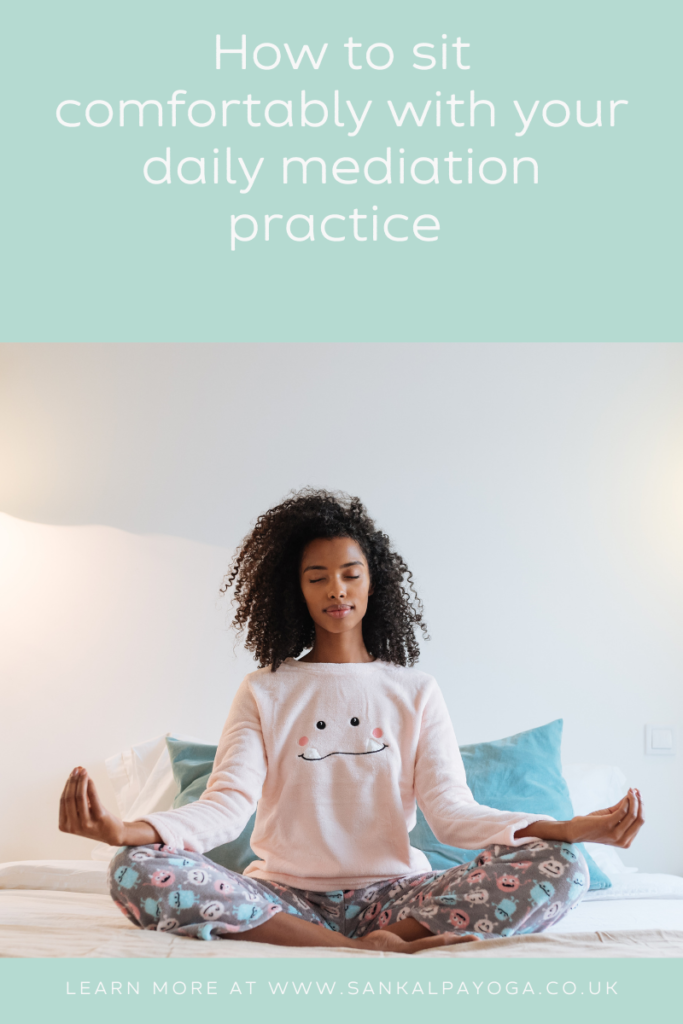
Do thoughts of sitting in the lotus position for hours on end put you off meditation? Sure, me too. But have you considered the possibility that we can meditate pretty much anywhere, anytime? After all, what else do we need but ourselves?
As a meditation teacher I come across resistance in new students a lot. There is a fear at the start, judgement and misconceptions that if you can’t get into a full lotus position then you’re ‘not doing it right’. My advice, give yourself a break. Allow yourself to trust in the process. Meditation is a practice and every experience can be different. It can bring with it different reactions but whether it’s a light or a shadowy experience it’s all part of who we are.
Often students have an expectation that meditation will only bring peace but as Pema Chodron explains “In our daily lives, our minds are like a pond with a surface rippled and troubled by waves and wind. When we meditate, the waves and the wind die down and the pond becomes calm…and that’s when we can finally see under the surface of that clear, smooth water…”
Where to begin? Forget the ‘should’
So, how do I make the idea of meditation appealing to a beginner? Be honest, dispelling any preconceptions the student brings with them is so important. In modern society we carry an expectation of a ‘quick fix’. In terms of inner work, this concept does not exist. It’s a practice, a journey, a road to travel. Experiences will shift from one day to the next, no two meditations will be the same or produce the same results. There is no right or wrong.
There is an opportunity here to let go of expectations, what we think we ‘should’ be feeling or experiencing. This ‘should’ is a huge barrier, it brings with it feelings of inadequacy and can cause such resistance to the process. We use the distractions as a welcome opportunity to practice mindfulness.
Mindfulness
We need to train ourselves to be in the present moment. We spend so much time dwelling on the past or concerned over the future that we forget to just be.
When we allow ourselves to get distracted in our meditation practice, feelings of anger, agitation and resistance can arise. Go gently here…
Notice how the attention is taken away from our focus. Observe the distraction, see it for what it is without making a judgement or listening to the mental commentary that goes with it “Argh, I can’t do this…it’s too hard!” “Meditation isn’t for me”. Observe rather than react, do not identify with the feelings of frustration or anger. There is no right or wrong, it’s all part of the process to sink beneath the layers of perception to find your true self. Smile to yourself and push the distraction to one side, bring your attention back to your focus. Over time you will notice that the space between thoughts and distractions getting bigger. Change is happening.
Sitting Comfortably
To minimise the initial physical distractions, it is wise to spend time finding a comfortable position.
A Guide for seated meditation
- If sitting on the floor it’s advisable to place a cushion or rolled up blanket underneath the hips to allow lengthening through the spine. You might also want a blanket underneath your ankles as you rest in a crossed legged position. To avoid slouching if you are sitting in a chair, prop a cushion behind your back. Also make sure your feet are flat on the floor to maintain hip health.
- Lengthen through the spine. Sit upright to avoid the tendency to collapse into your lower back and compressing the spine.
- Rest your hands in your lap or on your knees, wherever feels most comfortable without stressing the shoulders. It can be beneficial to rest a rolled blanket over the lap for the hands to rest on to avoid tension in the shoulders. Palms can be facing up or down depending on which is more comfortable but it is thought that palms up enhances our listening whereas palms down closes out the world for more inner work. Really, I say it’s down to what feels most comfortable at the time.
- Spend some time relaxing your shoulders. Rolling shoulders back, allowing the blades to slide down the spine opens the heart centre.
- Position the chin so that there is no tension at the front or back of the neck. Keep in a neutral position, neither tipped up or tucked to the chest.
- Relax the jaw by allowing the tongue to rest against the roof of the mouth. This also activates the two main energy meridians along the front and back of the spine.
- If it feels good to you, close your eyes. Otherwise, allow your eyes to take on a relaxed gaze, unfocused.
All we need is already here
Meditation is traditionally taught sitting on the floor but in truth it can be done standing, walking, kneeling or even lying down (this can be a bit dangerous as a requirement of meditation is to stay alert and the tendency to fall to sleep is strong in this position). Meditation is accessible to everybody, no exceptions and you don’t require any specialist equipment.
One thing you will learn very quickly on your journey into meditation practice is the need to master the art of patience. Go gently with yourself and leave all expectations at the door. Change will happen.
If you would like to learn more about where to begin when it comes to meditation you can contact me via my website by clicking here on Facebook or Instagram

Recent Comments